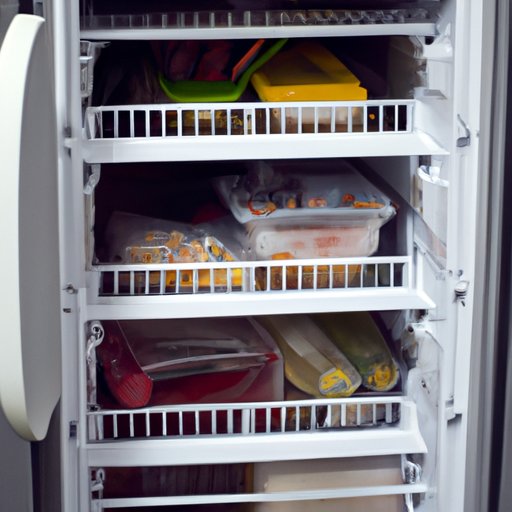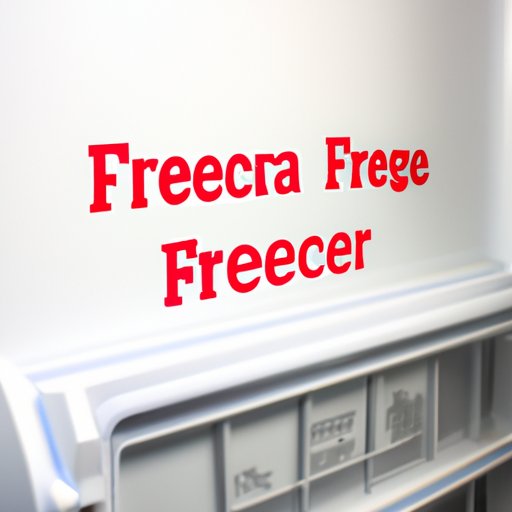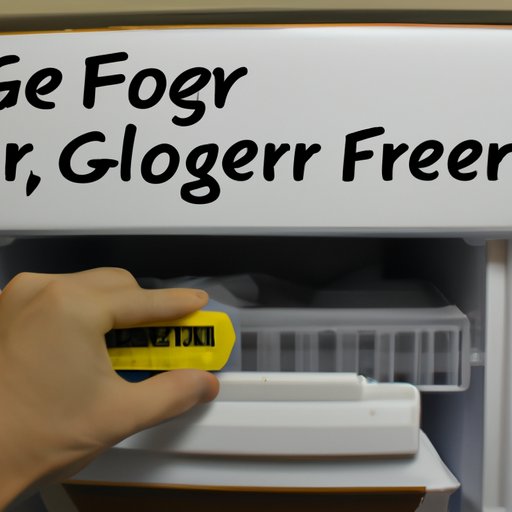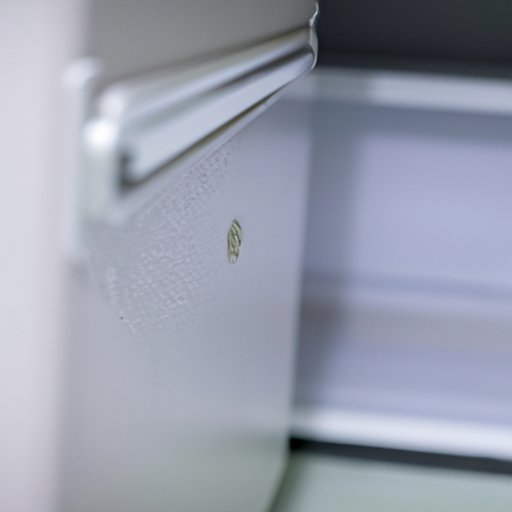Introduction
A freezer is an essential appliance in many households, allowing us to store food for longer periods of time and enjoy the convenience of having meals ready to go. But how does a freezer work? This article will explore the science behind freezing, explain how a freezer works, and provide tips for making the most of your freezer.
Explaining the Science Behind Freezing: How Does a Freezer Work?
When it comes to understanding how a freezer works, it’s important to first understand the effects of cold temperatures on food storage. Cold temperatures slow down the activity of enzymes in food, which helps to preserve its freshness and prevent it from spoiling. Freezers use a combination of thermal insulation and refrigeration to create and maintain cold temperatures.
The key parts of a freezer include the evaporator coils, the compressor, the condenser coils, and the expansion valve. The evaporator coils are responsible for absorbing heat from the air inside the freezer. The compressor then compresses the refrigerant gas, which causes it to become hot and move through the condenser coils. The condenser coils release the heat outside of the freezer and cool the refrigerant gas, causing it to become liquid. The liquid refrigerant then passes through the expansion valve, which lowers the pressure and temperature of the refrigerant, allowing it to enter the evaporator coils and absorb more heat.

How to Make the Most of Your Freezer: A Guide to Understanding Freezers
Once you understand how a freezer works, you can make the most of your freezer with some simple tips. First, organize and optimize the space in your freezer by using plastic containers or bags to keep food separated and easy to find. When storing food in the freezer, it’s important to know what types of food can be safely stored. Fruits and vegetables should be blanched before being frozen, while meat and fish should be packed in airtight containers or vacuum sealed. It’s also important to label and date all food that is stored in the freezer to ensure it is not left in there for too long and becomes unsafe to eat.
The Different Types of Freezers and How They Function
There are several different types of freezers available, each with its own unique features and functions. Chest freezers are large, deep freezers that offer more storage capacity than upright models. Upright freezers are more compact and come with shelves and drawers for easy organization. Combination freezers combine both chest and upright models and are great for those who need a lot of storage space. Commercial freezers are designed to meet the needs of restaurants and other commercial businesses with large amounts of food to store.

What You Need to Know About Freezer Maintenance
Maintaining your freezer is essential to keeping it running smoothly and efficiently. Regularly cleaning the interior of the freezer with warm water and baking soda can help reduce odors and ensure proper cooling. It’s also important to check the door seals for any signs of damage. If the seals aren’t working properly, cold air may escape and cause the freezer to run inefficiently. Additionally, it’s important to defrost a freezer at least once a year to prevent ice buildup and improve efficiency.
Energy-Saving Tips for Freezer Owners
Using your freezer efficiently can help save energy and money. To maximize energy efficiency, set the thermostat between 0°F and 5°F. Additionally, when the freezer is not in use, turn off the power switch or unplug it to reduce energy consumption. Finally, avoid overcrowding the freezer as this can prevent air from circulating properly, leading to increased energy consumption.

Common Troubleshooting Techniques for Freezers
If your freezer isn’t functioning properly, there are a few troubleshooting techniques you can try. Frost buildup, temperature fluctuations, and faulty door seals are the most common issues with freezers. To diagnose the problem, start by checking the thermostat setting and door seals. If the problem persists, it may be time to call a professional for repairs or maintenance.
The Future of Freezers: What’s Next?
The freezer industry is constantly evolving and new technologies are emerging to make freezers more efficient. One such technology is the use of fans to circulate cold air throughout the freezer, which helps to maintain consistent temperatures and reduce energy usage. Additionally, many companies are developing more energy-efficient freezers that use less electricity, making them more environmentally friendly. As technology continues to advance, we can expect to see more innovations in the freezer industry.
Conclusion
In conclusion, a freezer is an essential appliance in many households, allowing us to store food for longer periods of time. Understanding how a freezer works is key to making the most of your freezer and optimizing its energy efficiency. This article has explored the science behind freezing and provided tips and tricks for maintaining, troubleshooting, and making the most of your freezer. By following these tips and understanding the science behind how a freezer works, you can make sure your freezer is running efficiently and effectively.
(Note: Is this article not meeting your expectations? Do you have knowledge or insights to share? Unlock new opportunities and expand your reach by joining our authors team. Click Registration to join us and share your expertise with our readers.)
